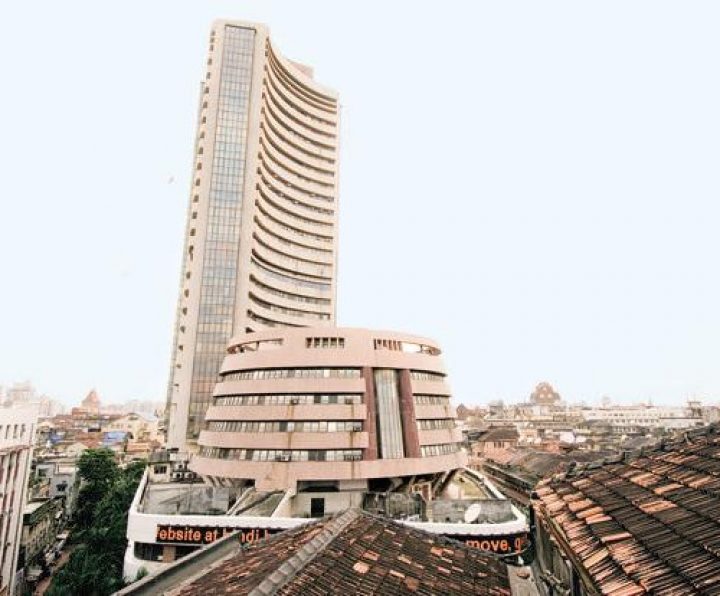
IT stocks still attractive; pharma stocks seems to have bottomed out
We feel that over the long term, markets will track corporate earnings growth, which along with GDP growth, is expected to pick-up.
IT sector valuations are still relatively attractive, and earnings growth visibility remains for the sector, which will aid in the short to medium term,
Sampath Reddy, Chief Investment Officer, Bajaj Allianz Life Insurance Company, said in an interview with Moneycontrol’s Kshitij Anand.
Edited excerpts:
Q: Do you think the current momentum will continue until elections?
A: It is difficult to say what will be the impact of upcoming elections on markets in the very short term, but what we have observed is that elections
impact is more transient in nature, and may cause volatility in the short term.
Over the long term, markets are more guided by fundamental factors, like corporate earnings growth, which will be the major determinant for market
returns.
The recent market rally has been led by multiple factors. Firstly, with the correction in broader markets, valuations have become more reasonable, compared to a year back, providing some attractive bottom-up opportunities.
Earnings growth is recovering gradually, and we expect it to accelerate in FY20, and probably the markets are starting to factor that in.
Recently, major central banks such as the US Fed and ECB have been quite dovish in their statements, which is beneficial for emerging market (including India) flows, yields, and currencies.
Q: Do you think it is time to spot some beaten down stocks in the broader market?
A: Yes, after the significant correction in the small and mid-cap segment over the past year or so, valuations have become reasonable, and the premium of small and midcaps compared to largecaps has come down significantly.
Although we still continue to be more positive on largecaps from a risk-reward perspective, some attractive bottom-up opportunities have emerged in the mid- cap segment, and we suggest some allocation to long-term investors.
Through our investment communication, we had advised some allocation to midcaps in late October 2018, and recently again in 2019, after the correction seen in the past couple of months.
Q: How do you see the market moving in the long term?
A: We feel that over the long term, markets will track corporate earnings growth, which along with GDP growth, is expected to pick-up.
Yes, the market cycle has lasted long, but there have been intermittent corrections that we have seen in 2011 and 2018 (particularly in broader
markets).
So a slower bull market is better than very heady returns in a short span of time, which can create some froth in the market.
The midcap index returns divergence from the headline largecap index returns have also reduced, with the significant correction seen in the former over the past year or so.
Q: Two beaten-down sectors in the recent past are finding their footing back on D-Street—PSU banks and metals. What are your views?
A: PSU banks have seen some recovery, on the back of expected turnaround of the NPA cycle. The Insolvency & Bankruptcy Code (IBC) has been a major reform.
Also, with the recapitalization of PSU banks by the government, some of them are starting to come out of the Prompt Corrective Action (PCA) framework, which will help to aid credit growth.
However, we are still more positive on private banks and feel that they will continue to garner more market share over the medium to long term.
Commodity prices fell near 2018 end, due to rising concerns on US-China trade war and a potential slowdown in global economic growth. This led to a fall in metal stock prices.
In the recent past, there had been some positive commentary on the US-China trade deal. But the concerns on the global economic growth still stays.
Some of the metal stocks are trading below replacement value, and if the concerns mentioned earlier ease, the outlook for the sector would be
favourable.
Q: What are your expectations from the rupee, and in turn pharma and IT sectors that are generally affected by any movement in the currency?
A: The rupee has benefited over the past few months due to correction in crude oil prices from 2018 highs, some recovery in foreign equity flows, dovish
statements of major central banks, and a relatively stronger economic growth outlook for India.
We think that the rupee will largely remain stable unless some major global risk aversion event happens.
IT sector valuations are still relatively attractive, and earnings growth visibility remains for the sector, which will aid in the short to medium term.
The sector has been a major outperformer over the last year on a comparative basis, which could be a challenge in a scenario of appreciating currency. The return of cash to shareholders through buyback is an additional positive for the sector.
We feel that the pharma sector may have bottomed due to declining USFDA-related regulatory issues, stabilisation in US base business, and the domestic business is expected to start reporting double-digit growth after temporary setback (due to GST and demonetization). If rupee stays at current levels, then we don’t see much impact on earnings.
Q: Fears of global growth has again resurfaced especially after ECB decision as well as OECD report. Should investors be worried?
A: Yes, there has been some downgrade in global growth forecast for 2019 recently from international agencies like IMF, etc. and the same is being
reflected in the dovish commentary of some of the major central banks.
India’s growth is expected to pick up in 2019-2020, and it is favourably positioned as one of the fastest growing major economies in these years.
However, an eye needs to be kept on global risk appetite, and the magnitude of the global growth slowdown, as the year progresses.
source: moneycontrol.com
Categories: Indian Stock exchange, Indian Stock Market, Indian Stock Pick
Sorry, comments are closed for this item.
